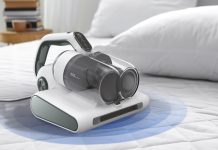
The importance of electronics in the home appliances and the growing demand for connected products make the electronic systems testing very relevant. In an interview with Nicola Tonello (Electrolux‘s global laboratory methods competence leader), published by the Consumer Electronics Test & Development magazine, the importance that the company attributes to the testing activity emerges. As reported in the article, Electrolux has invested a lot of time and effort in recent years to enhance its electronic systems testing capabilities to optimize the quality of its electronic solutions. At the heart of these efforts is Nicola Tonello, whose experience in electronics, Electromagnetic Compatibility (EMC) analysis and problem solving, quality analysis, root cause analysis, and continuous improvement, has helped Electrolux develop products that are both reliable and user friendly. Looking at the types of tests carried out on the electronic systems, Tonello says, “at Electrolux, we undertake a number of different testing processes on our electronic systems, including the full development of the system itself. The tests are done at different stages of the product development process and include pre-compliance and full compliance EMC tests and environment, mechanical, reliability, safety and performance testing”. Electrolux uses its internal laboratories to conduct the testing. These are equipped with the latest generations of instruments and are compliant with quality standards including ISO 17025. For example, for EMC the company has six labs, including a full- and semi-anechoic room (designed to absorb sound or electromagnetic waves), and related instruments for all types of radiated and conducted tests. The company has also recently invested in two new full anechoic rooms with related instruments for EMC testing. This investment was mainly driven by the increased demand for connected appliances. “For environmental testing we are using climatic chambers – Tonello continues -. We have about 50 of these around the world for testing electronic boards and components, and we also use vibration shakers. Both of these can also be used for reliability methodologies”. Electrolux has testing laboratories around the world, located in different regions and belonging to different product categories. “This ensures that we can meet the specific needs of people globally whilst adhering to geographic specific legislation”, Tonello says.
Connected devices
According to Tonello, the increased demand for connected devices from customers has had a huge impact on the consumer electronics market and led to new requirements during the testing process. “We are now installing Wi-Fi and BLE (Bluetooth Low Energy) boards inside our appliances and this has pushed us to make new investments in testing methodologies to cover all the possible scenarios”, he says. “For example, we now have new performance parameters to consider, such as the Wi-Fi coverage of the appliance and the internet connection time”. The introduction of connectivity in appliances has also led to the investment in new labs and anechoic rooms. Electrolux has recently opened one new lab in Italy to cover radio and EMC testing for connected appliances up to 40 GHz. “The lab will have a high level of automation inside in order to decrease the time to market and increase testing, and ultimately, product quality”, Tonello explains. Another new technology that has had a big impact on the Electrolux testing process is voice activation. Many Electrolux products are now integrated with Google Assistant, enabling consumers to control products using voice commands. “This integration introduced new testing methodologies focusing on everyday usability -Tonello comments -. We had to work on compatibility with the Google system and on the customer experience”. Tonello also notes that the company is exploring the use of 5G in its products, and that the technology is set to have a huge impact on the testing environment, but the exact details of this are still in evaluation and are therefore confidential. “Overall it is a very exciting and rewarding time working in the consumer electronics test environment – Tonello adds -. There are so many new things to consider while working toward making the end user experience as rewarding as possible. Our continued investments in testing automation, which enable us to carry out testing 24/7, both for software and hardware verification and validation, are proof of this”.



